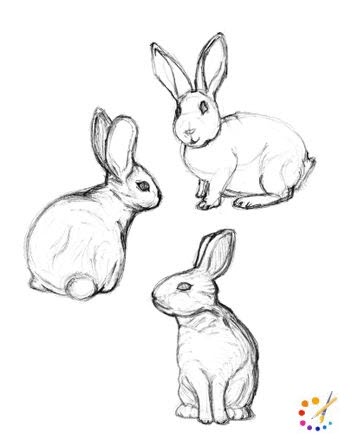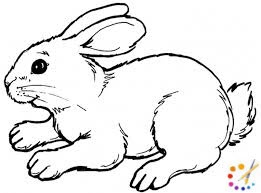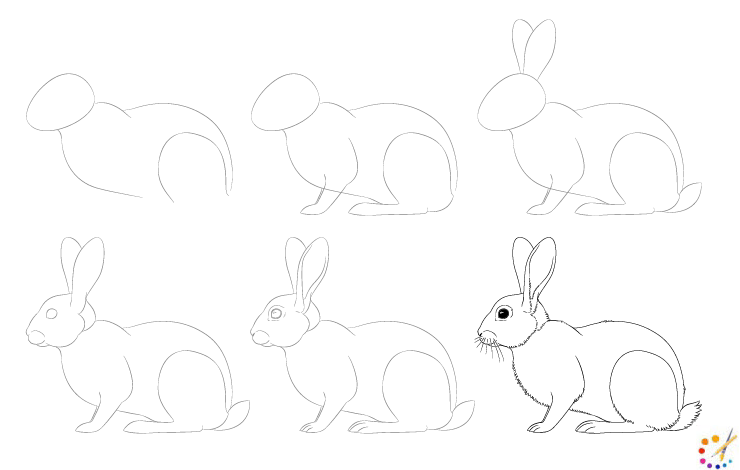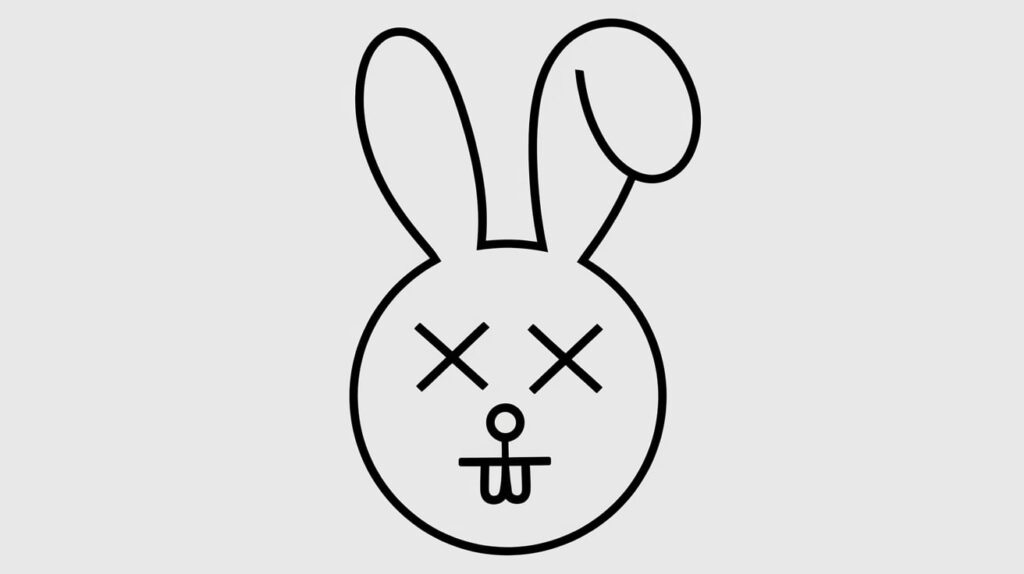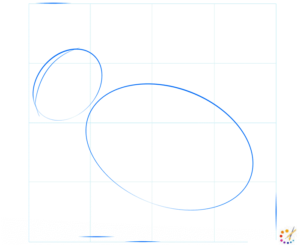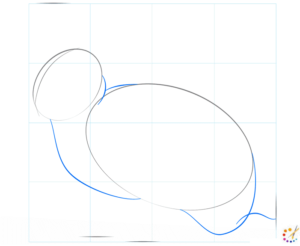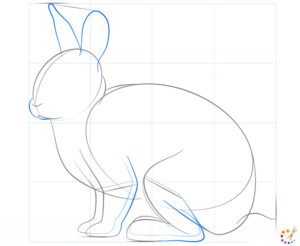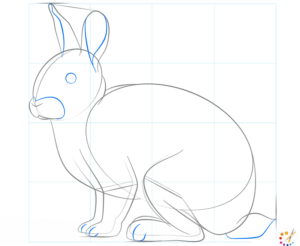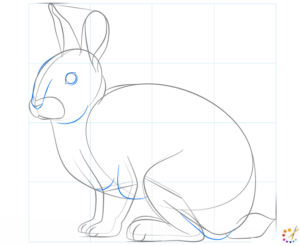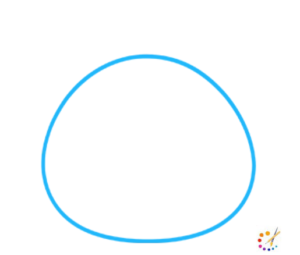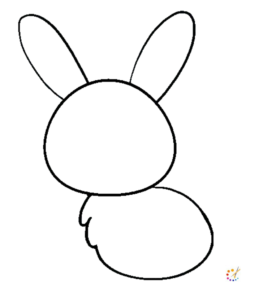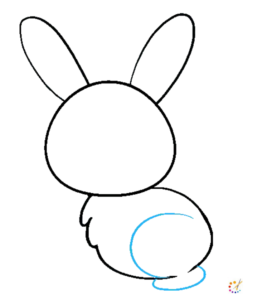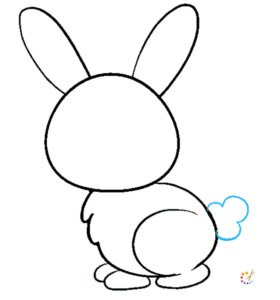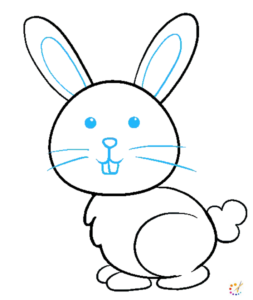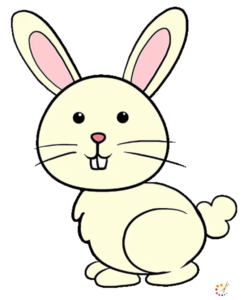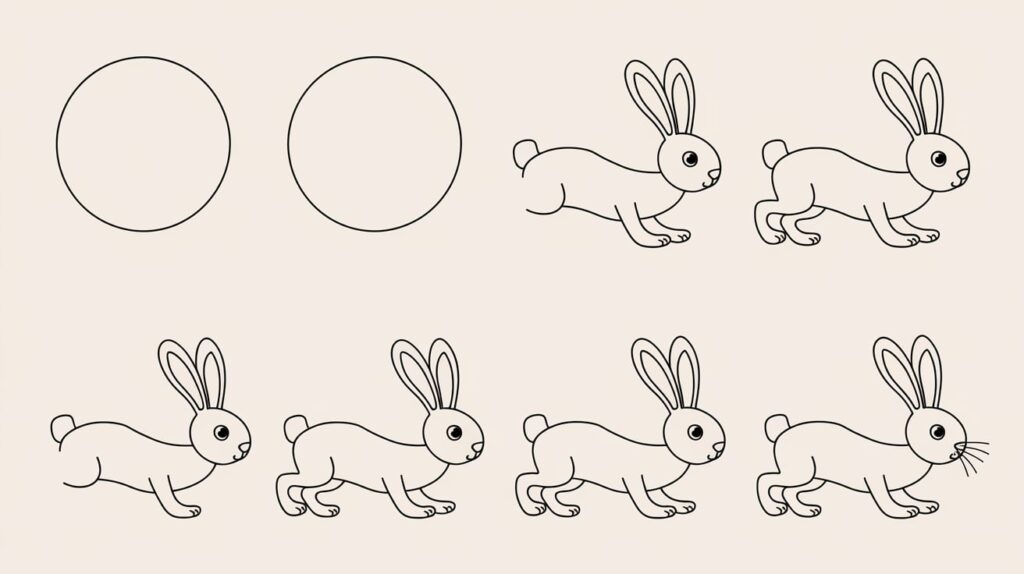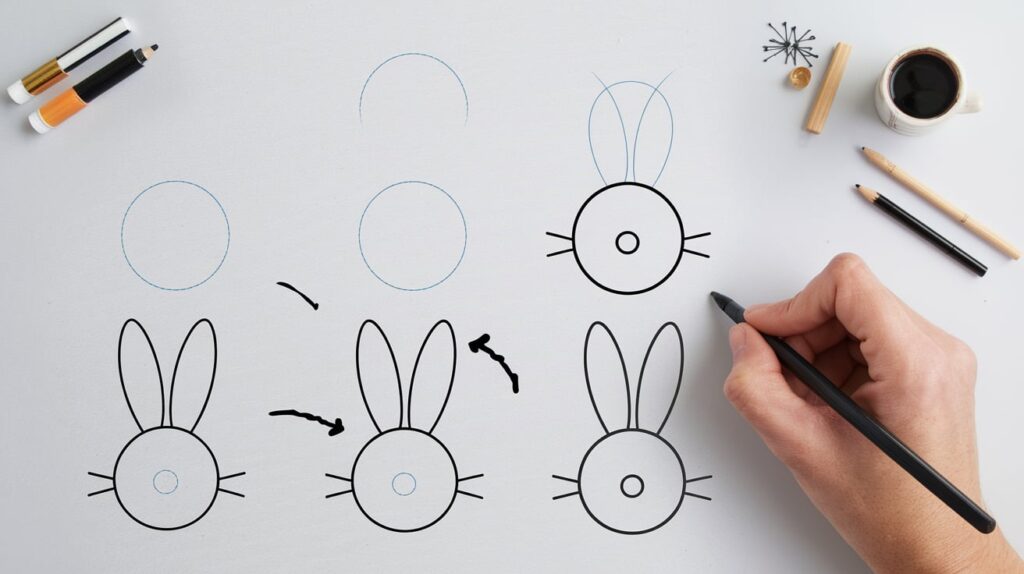We are here with this easy drawing tutorial on how to draw rabbit. Rabbits are cute animal loved by everyone often termed bunnies, hares. They are “lagomorphs” a special species that likes to live in a cold climate. They start running immediately after birth and live up to 8 yrs of life. They are herbivores, totally covered with hairs from birth.
The animation industry is using them for a long time to entertain kids. Bugs bunny a famous character from “A Wild Hare” is the most famous cartoon character. Few more facts about bunny are given below:
- Carrot is their favorite food.
- Some species have the size of human toddlers.
- Rabbits babies called kittens.
- They start breeding from age of 6 months and can breed up to 12 kittens.
- The bad fact is, they eat their own poop.
- They groom themselves like cats.
- They never vomit.
- They have 360 degrees of vision.
- They are the best jumpers.
- Their teeth kept growing.
- They dig tunnels termed as warrens.
- Their ears help them in keeping them cool.
- Hard to catch as they are the fastest runners.
Getting curious to draw your rabbit, just follow these simple steps to render your bunny on paper. You don’t need any extra skills to draw a rabbit on paper, your paper, pencil, and this tutorial is enough.
If you liked this tutorial also follow how to draw a dolphin, monkey, mouse.
How to draw rabbit step by step for kids:
How to draw rabbit for kids and beginners
Step 1: Delineate your drawing outline measuring the body of rabbit, for this draw 2 ovals for head and body.
Step 2: In the middle of the head and body draw a curve and form the neck. At the back of the body extend the with a curve, and draw outline for tail.
Step 3: Draw outlines for the forelegs and back legs as depicted below.
Step 4: It’s time to draw the rabbit’s long ear, above the head draw 2 longular shapes, also outline the snout, and finish the shape of legs.
Step 5: Draw another outline inside the ear, draw the mouth with the curve, finish the fingers, and tail for the rabbit.
Step 6: Draw eyes and an angular shape for the nose of the rabbit, highlight leg bone with the curve.
Step 7: Draw hairs all around the body outline and nose bone, ears, also draw whiskers on both side of the mouth.
Step 8: Erase all extra lines from inside the body and give a finishing touch, darken the eyes.
How to draw cartoon rabbit:
Step 1: Draw a triangular round forming the head of the rabbit.
Step 2: Above the head draw 2 long angular shapes for the ears, as rabbits have long hair.
Step 3: Below the head little towards the right draw an oval shape to depict rest of the body.
Step 4: Draw curvy lines from below the head going towards the body of the rabbit, draw from the right side also, follow the image below.
Step 5: Delete the lines inside the image you will get similar to the below one.
Step 6: Draw a C shape inside the lower body following by a curve outside of the body.
Step 7: At the back of the rabbit draw a tail using 3 curves.
Step 8: Underline the ears of the rabbit, draw eyes with a triangular nose following a mouth with tongue. Also, draw 2 pairs of whiskers.
Step 9: Color your rabbit with any light color and red nose.
Here’s a unique step-by-step guide to drawing a rabbit:
Step 1: Sketch the Rabbit’s Head
- Start by drawing a medium-sized circle for the head. Make the top part slightly flattened to give it a natural shape.
Step 2: Add the Ears
- From the top of the head, extend two long, narrow ovals upward for the ears. Rabbits have large, upright ears, so make sure they are tall and slightly curved.
Step 3: Draw the Body
- Below the head, sketch an oval for the rabbit’s body. Make it wider than the head and slightly tilted, as if the rabbit is in a crouched position.
Step 4: Create the Eyes
- Inside the head circle, add two small ovals for the eyes. Place them close to the upper half of the head to give the rabbit a gentle expression.
Step 5: Add the Nose
- Just below the eyes, draw a small triangle or heart shape for the nose. Keep it centered but slightly lower than the midpoint of the head.
Step 6: Draw the Mouth
- Underneath the nose, sketch two curved lines forming an upside-down “Y” shape. This will create the mouth, with the lines slightly separated for a cute look.
Step 7: Add the Legs
- On the front part of the body, draw two short, straight lines down from the body for the front legs. Add small oval shapes at the bottom to form the rabbit’s feet.
- For the back legs, draw larger, rounded shapes that curve upward from the rear of the body, giving the appearance of the rabbit crouching.
Step 8: Draw the Tail
- On the back of the rabbit’s body, add a small fluffy circle to represent the tail. Keep it soft and slightly rounded to match the rabbit’s form.
Step 9: Shape the Ears and Face
- Add some detailing to the ears by drawing a line down the middle of each ear. Add tiny strokes inside the ears to give them texture.
- Shape the face by drawing a soft curve under the nose to give the cheeks a fuller, rounder look.
Step 10: Finalize the Details
- Add fur texture with small, soft strokes along the rabbit’s body, face, and legs.
- Add shading to the feet, ears, and body to give your rabbit depth and dimension.
Step 11: Finish the Drawing
- Refine any final lines and erase unnecessary guides. Darken the outline of the rabbit and add additional touches to make the fur, eyes, and nose stand out.

Skilled teacher, knowledgeable in and in adapting state content standards to individual needs in
Elementary-6th grade classrooms. Utilizes instructional materials, technology, and teaching methods to
engage students in effective learning opportunities in individual, small group, and whole-group settings to
maximize instructional time. Differentiates instruction for ELLs while exposing them to rigorous content,
with a focus on literacy skills in all subject areas. Establishes and maintains appropriate standards of
behavior in an inclusive and respectful environment for students from all socio-economic and cultural
backgrounds. Develops lesson plans using Backwards Planning Method to align content standards and
assessments with effective learning activities. Communicates and collaborates effectively with staff and
parents, and creates a safe and positive learning environment for students. Has taught in both in-person
and virtual environments. Professional Communicator with 20+ years of experience.


